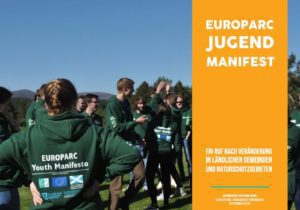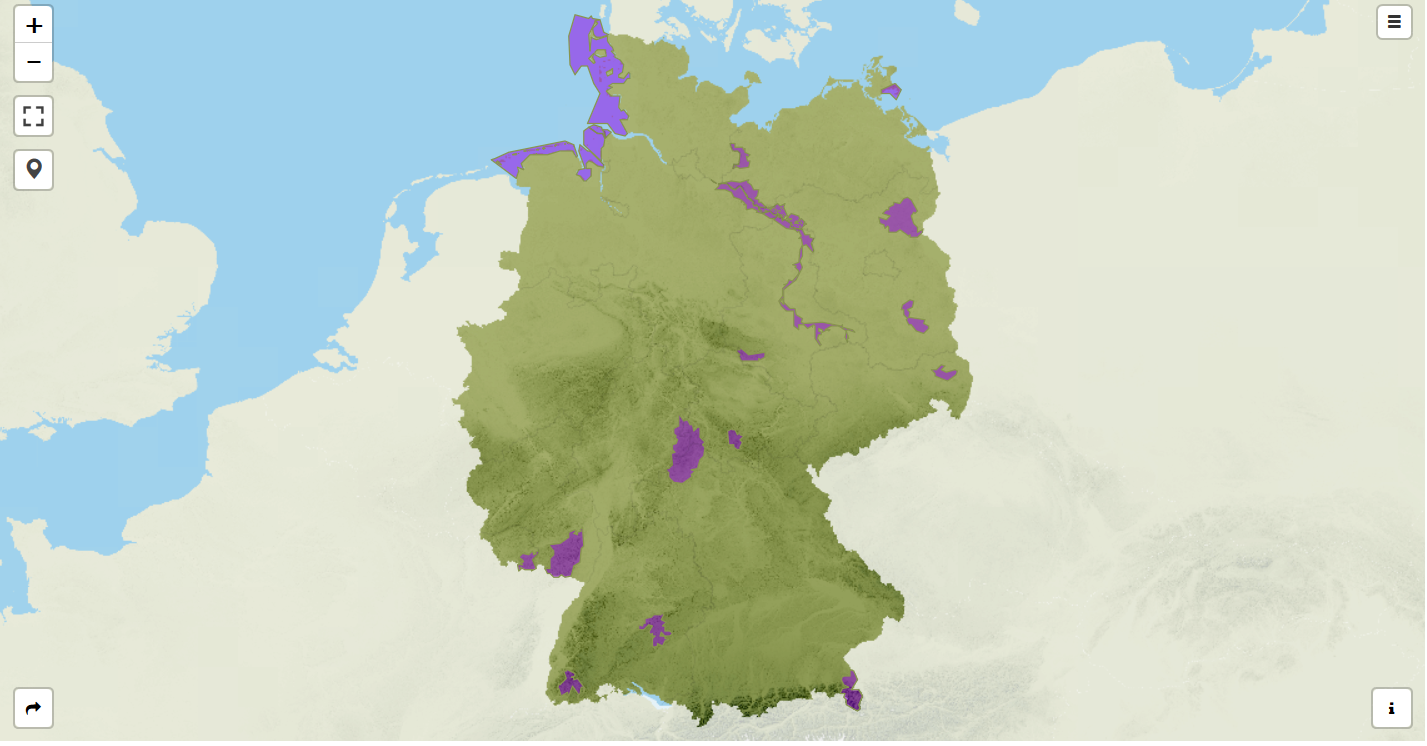European Day of Parks – Get inspired, get involved, celebrate Our Natural Treasures!
European Day of Parks is just around the corner! So buckle up and let us take you on a journey across Europe for the best events organised in order to celebrate Our Natural Treasures – the main theme of this year’s European Day of Parks! It is a call to reconnect with nature, and to highlight the natural treasures that make your Park so special!
In case you haven’t yet organised and registered your event – it is still not too late! We invite all protected areas to organise events in and around the 24th of May!
You might set up a guided tour through your Park, a special wildlife watching programme or a night tour to observe the amazing night creatures! Get your Junior Rangers and Youth on board and make them lead the activities in your Park: they can tell your visitors all about a special species, monument or habitat.
Involve your local schools in handcraft activities, such as creating nests or feeding stations, creating sculptures of your main species or maquettes of the existing habitats. Preferably, you would take them out, plant trees, teach them how to identify mammals footprints and drops, or how to identify birds by their singing. There is a whole set of activities you can organise in your Park to invite your Community!
Once you have defined your events, don’t forget to register them here.
Download the official poster and web banners to promote your event in your languages.
Italy – PARCO SUD MILANO – May 24th, 2019 – Water Museum in the park
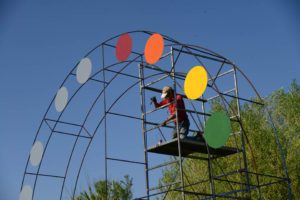
From the 18th to the 20th of May we organize visits to the PARCO SUD – SOUTH PARK of Milan and guided visits free of charge for families to the MAF Water Museum in the park.
You will be able to see installations made by artists from 34 States with the theme “Nature and Circular economy: Respect the Nature”
The guided tours will lead you through the area of the park in which the artists created their art with recycled materials.
On the 24th of May, we will also organize visits to the water plants inside the South park of Milano.
More information about the event can be found here!
Romania, Enduro Ranch – 24 May 2019 – Ziua Europeană a Parcurilor
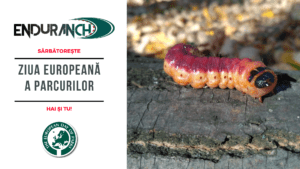
Celebrate along with us the European Day of Parks, on the 24th of May.
They say that children are our future – that is why during this year’s European Day of Parks they are our honorary guests. We highly advise you to invite the youth to celebrate with us in #enduranch. Explore for free the only private nature park in Moldova Region. Your entrance ticket will be “paid” with a photo taken here on the day of the event. Capture the beauty of nature – it can be anything you like: animals, flowers or anything else that might catch your eye.
PROGRAMME: FRIDAY 24th of May between 13:00 – 19:00!
Don’t be afraid of nature. Teach your children about our Natural Treasures and you will have a healthy future! #enduranchwelcome
More information about the event can be found here!
Slovenia – Goričko Nature Park – 25 May 2019 – Hiking along the border Slovenia-Austria
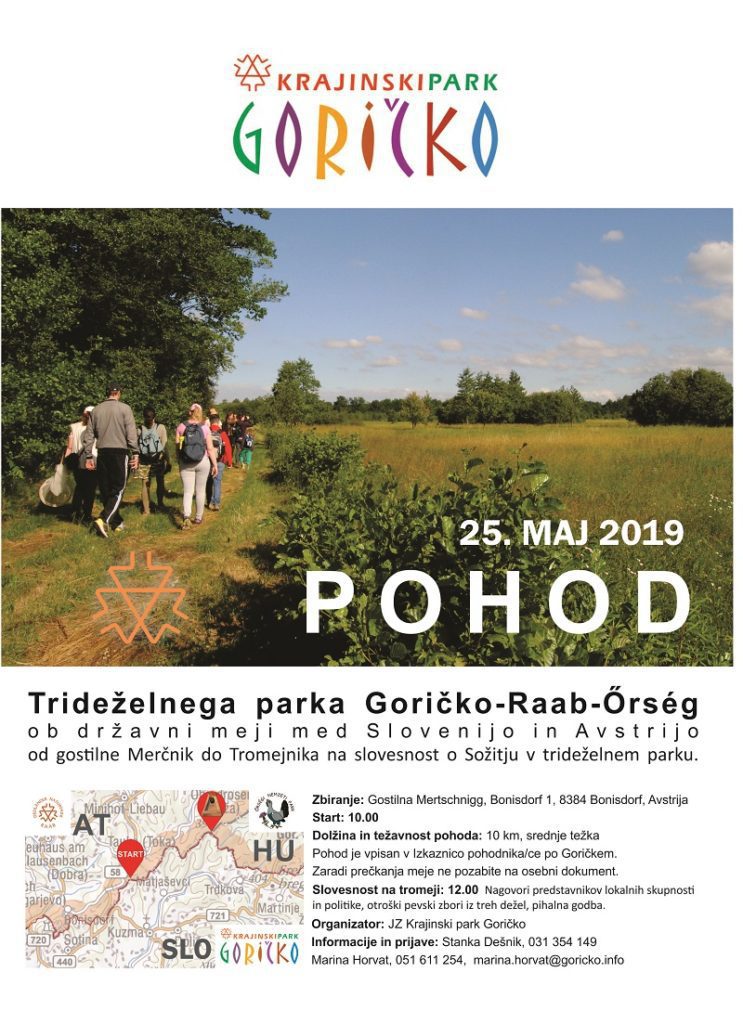
If you want to celebrate this European Day of Parks in nature, Goričko Nature Park has prepared a perfect event for you. Join the 10 km long hike along the Slovenia-Austria border.
More about the event can be found here!
The Netherlands – Het Nationale Park De Hoge Veluwe – May 26th, 2019 – Vroege Vogelconcert
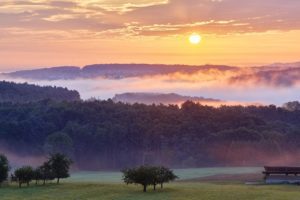
Pixabay
Enjoy the natural treasures of De Hoge Veluwe National Park, and listen to a unique Early Bird open-air concert. Extra early, so that the music of Trio Cortena merges with the singing of the birds in the Park.
This special concert is held at the foundations of the never-completed Grote Museum, at the foot of the Franse Berg. In combination with the singing of hundreds of birds, this Early Bird Concert promises to be an extraordinary experience. Fold out the chair, get your blanket and enjoy.
More information about the event can be found here!
Check out other events organised in and around the European Day of Parks on the map!
The European Day of Parks is a commemorative day for Protected Areas across Europe that was launched in 1999 by the EUROPARC Federation to celebrate Protected Areas throughout Europe. It celebrates the creation of the 1st National Parks in Europe – a set of nine parks created in Sweden in 1909.
Combating against invasive alien species in Central – and Eastern-Europe
Article issued by Csaba Bereczki
Every year, the Alfred Toepfer Natural Heritage Scholarship supports the work of young conservationist in protected areas across Europe. Csaba was one of the winners of the Scholarship in 2017.
Invasive alien species are among the biggest threats to biodiversity, causing huge problems worldwide in nature conservation, forestry, agriculture, public health, and economy. Despite the fact that global knowledge is getting bigger and bigger every day about invasive alien species, new practices and techniques occur in mapping, monitoring and eradication, conservationist should improve their skills in order to act immediately and precisely for new challenges connected to newly occurring species, fast spreading of known species in order to protect the most sensitive native habitats and species, and eradicate invasive species.
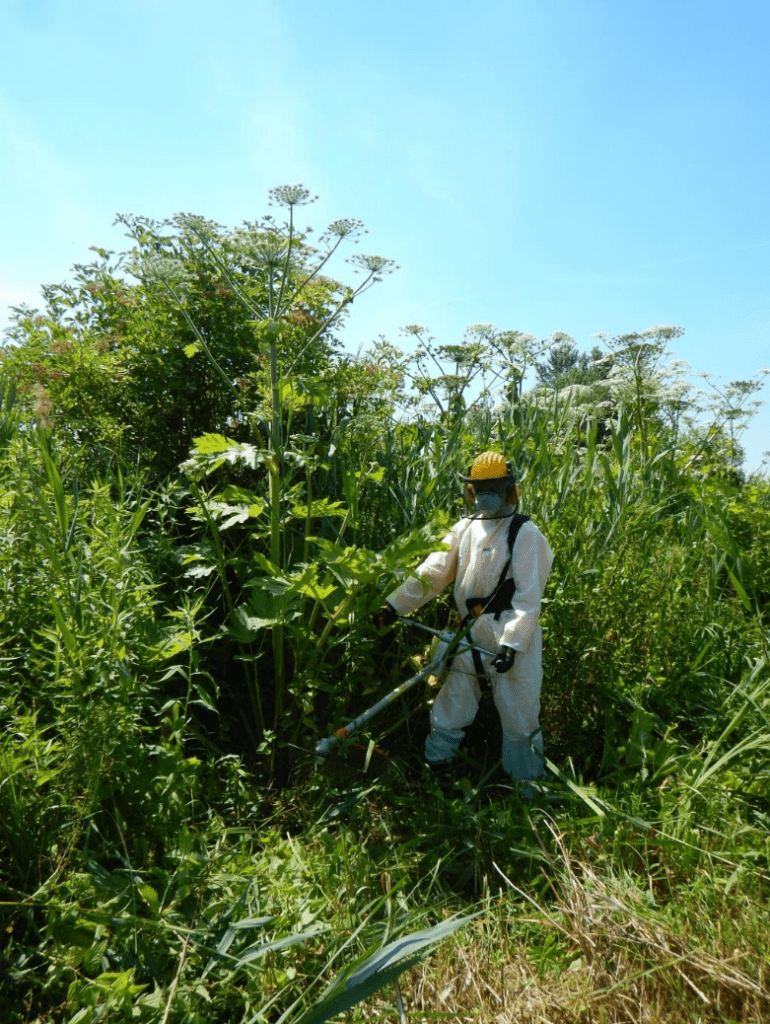
Eradication of Heracleum sp. at Kiskunság National Park
Due to global climate change and international commerce the spread of invasive alien species is accelerating more and more. Thus, collecting information from similar habitats and sharing knowledge about best-practice methods of detection, mapping, monitoring, and eradication is essential in the effective and efficient combat against invasive alien species. It is also very important to make non-professional people understand the problem of invasive alien species and get them involved in the combat against them.
During the extraordinary opportunity provided by EUROPARC and Alfred Toepfer Foundation, I made a study tour through protected areas of Central- and Eastern-Europe in order to fulfill as many gaps in my knowledge considering the issues connected to invasive alien species and to help my organization in the combat against them.
The first station of my study tour was the Fertő-Hanság National Park Directorate, where I had the opportunity to get an insight into one of the most precise detection, mapping, and monitoring system, which would be applicable to my home organization after some slight modifications.
At the Kiskunság National Park Directorate, I gained general experiences about those IAS, which occur at Hortobágy National Park Directorate. These experiences will help to improve and adjust our recent practices in order to be more effective and efficient in the combat against IAS, especially against the tree of heaven.
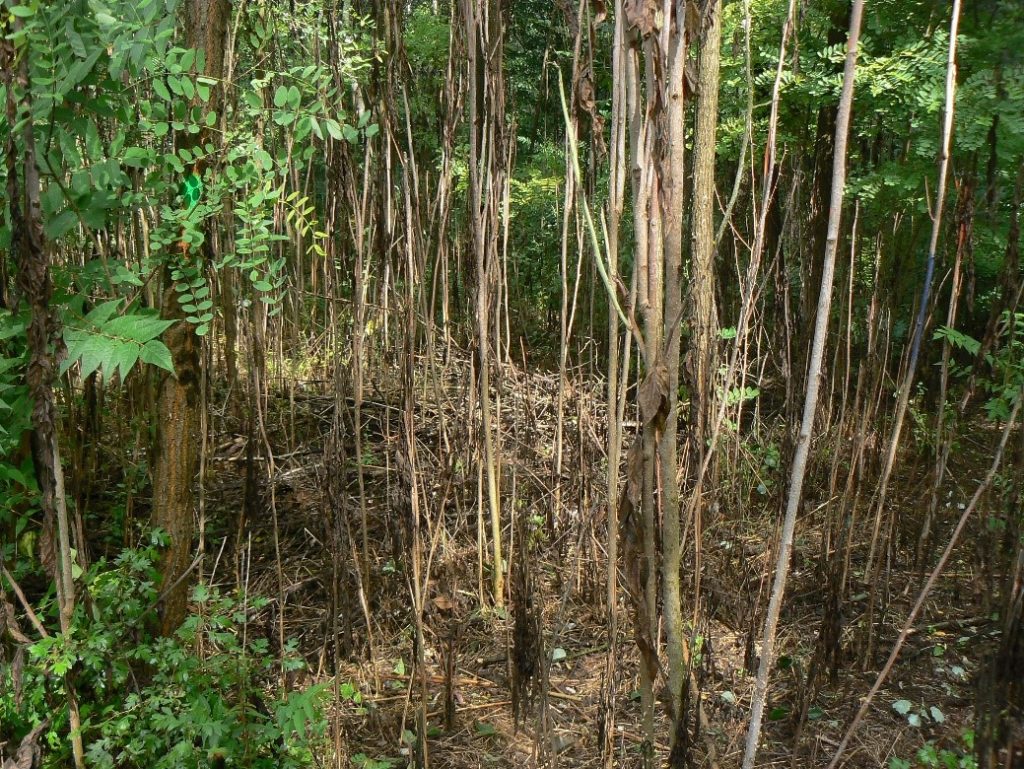
Eradication of tree of heaven in the Kiskunság National Park
The experts of Biebrza National Park are very experienced in involving non-professional people (children, students, interns, tourists, locals, etc.) into the eradication measures they take against IAS. I had the opportunity to get involved one of these actions taken against IAS together with volunteers.
One of the most important and threatening IAS is black locust in Hungary. It was very important to gain as many information about this species as possible during the tour. The Podyjí National Park has a lot to work against black locust. During my visit, I met different eradication practices applied by the experts of Podyjí within different circumstances. It was very useful to compare the efficiency and effectiveness of all of these techniques, and all the bad and good examples.
In Thayatal National Park they introduced me to one of the most precise monitoring programmes.
The visit to Šumava National Park broadened my knowledge about IAS animals, especially about the different detection tools. Furthermore, the staff members introduced their relevant experiences about the Himalayan balsam and the garden lupine. The eradication measures I learned would be very important and useful in the near future because both species are about to spread quickly in Hungary.
In Croatia, with the help of the experts of Medvednica Nature Park, I broaden my knowledge about the black locust and different non-chemical, forest management techniques against them. This station of my tour was also very useful regarding the legislation and authorization processes.
The last station was the Bükk National Park Directorate. I learned here new mapping and monitoring practices, which are going to be used after modification at Hortobágy National Park Directorate, too. Additionally, we compared our knowledge about IAS animals like spinycheek crayfish and invasive fish species. This part of my tour was very useful considering the way how I understand IAS because within certain circumstances species behave differently then we expect, like the case of European smoktree.
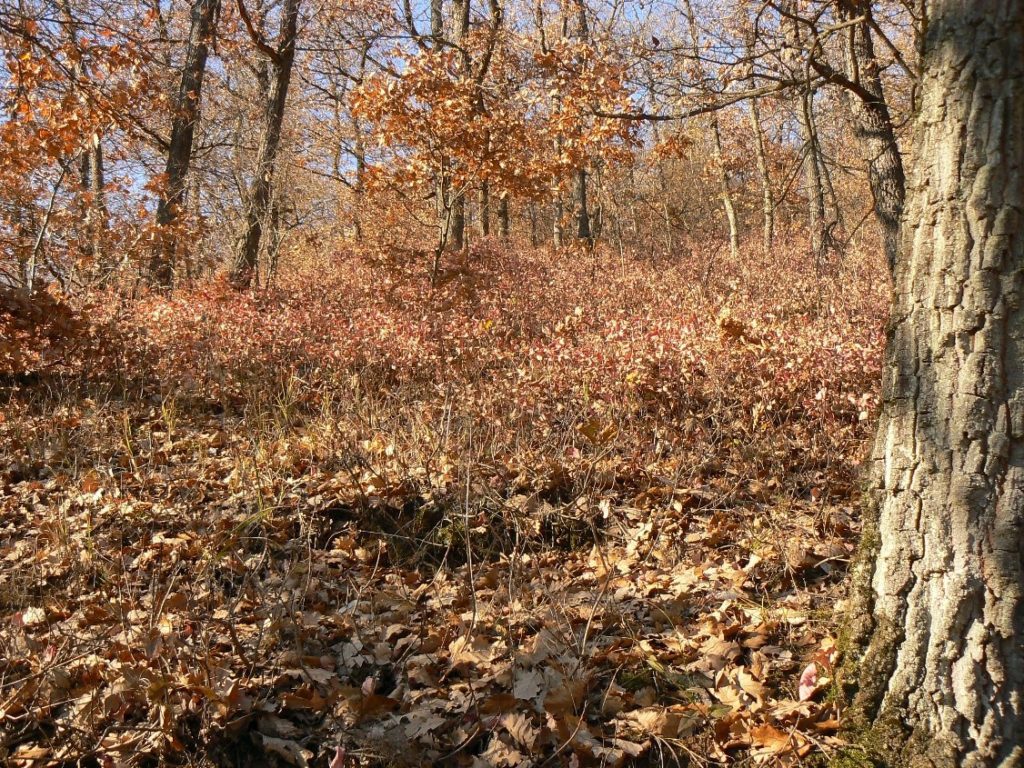
Dense smoke tree layer under open oak forest in Bükk National Park
The whole study tour did raise my attention (again) about the most important thing experts can do in their combat against IAS and that is (even though it sometimes seems hopeless), sharing their experiences and joining forces in order to help each other in every step of this combat: detection, mapping, monitoring, eradication and raising awareness.
Take a look at the short video summarizing main objectives, questions, and answers of the Report:
You can download the complete Study Tour Report here!
Opportunity for young people from all over Germany, Austria, Switzerland and Luxembourg – MAB JUGENDFORUM 2019
MAB JUGENDFORUM 2019
You are young, live, work or engage in a biosphere reserve and want to make a difference?
You want to know more about sustainable life and business?
You would like to meet like-minded people from all over Germany, Austria, Switzerland and Luxembourg?
In case you answered these questions with yes this is a perfect opportunity for you! EUROPARC Germany is organizing an event for young people from 18 to 25 years of age who would like to take part in „MAB Jugendforum 2019“ in UNESCO-Biosphärenreservat Rhön!
This project is connected to EUROPARC Youth Manifesto – one of the first initiatives of this kind in Germany. You can download the Youth Manifesto in German to learn more about it!
When?
From the 6th to the 9th of September 2019.
Participation is free for you.
Apply until 02.06.2019.
Click here for the preliminary program.
Who can participate?
Young workers and apprentices from biosphere reserves in Germany, Austria, Switzerland, and Luxembourg
What can you expect at the Youth Forum?
– You spend an extended weekend (06.-09.09.19) in the environment education center Rhöniversum in the biosphere reserve Rhön (Bavaria) with a varied and exclusive program.
– You get to know about 70 other young and open-minded people who are in similar life situations, and with whom you share experiences and interests, but also can have fun,
– You acquire new knowledge and skills or deepen what you already know, e.g. nature conservation, corporate responsibility, regional marketing, project management, personal initiative, teamwork, and presentation techniques,
– You get support in the development and implementation of a small project in the “own” biosphere reserve and
– You get the chance to present your ideas and demands for the future of biosphere reserves.
What is your responsibility?
– If your application is successful, you make a binding commitment to participate throughout the Youth Forum from 06.09.19 in the afternoon to 09.09.19 in the morning (excluding travel times).
– You will meet with “your” biosphere reserve administration and possibly other participants from the region on approx. 2-3 dates to discuss and plan your own small project, which can be implemented after the Youth Forum.
– You go into eventful days with approx. 70 other participants from all over Germany and neighboring countries with an openness for new things and you are ready to get actively involved in the program
– if your project receives prize money, you use it for the realization of the project and complete the project together with “your” biosphere reserve administration.
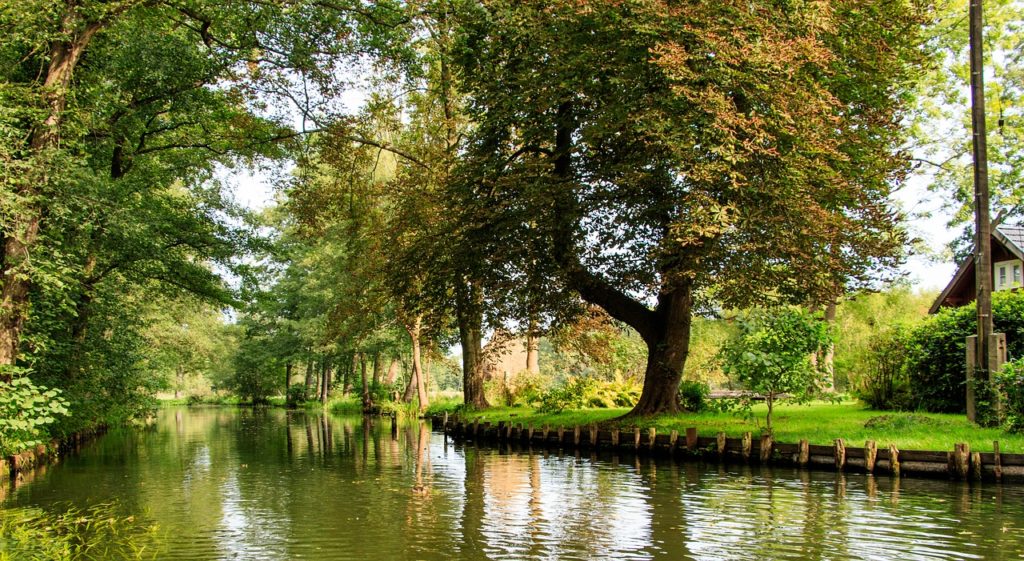
Pixabay
When and how can you apply?
From now on, just fill out the application form.
What happens after the application?
By the 15.06.2019, you will be informed about your participation in the MAB Youth Forum.
Which costs will be covered?
The costs for overnight stays, meals, arrival, and departure, as well as the program costs, will be covered. You only have to pay for additional drinks.
How do you arrive and depart?
The recommendation is to travel by train to Gersfeld (Hesse) or Bad Neustadt an der Saale (Bavaria) railway stations, from where shuttle buses will be used to the conference center. The departure will be the other way round.
Take a look at the map of Biosphere Reserves in Germany.
All the additional information can be found here!
Become a part of Junior Ranger stories and experiences: “Wintercamp in Bavarian Forest”
JR Frederikshavn Kommune
Wintercamp in Bavarian Forest
Junior Rangers from Denmark, Cairngorms National Park, and National Park Bavarian forest met up in Bavaria in the beginning of March. The National park had invited Junior Rangers from Denmark and Scotland to participate in a winter camp, where they had an opportunity to learn more about Nature in wintertime and work on collaborating together across the borders.
Ranger Mario Schmid and the Junior Rangers in the National park of the Bavarian forest had created a fantastic program full of versatile activities. Participants left the camp full of impressions and new experiences.
They are very grateful for this opportunity and are hoping to be able to host the next edition of the camp.
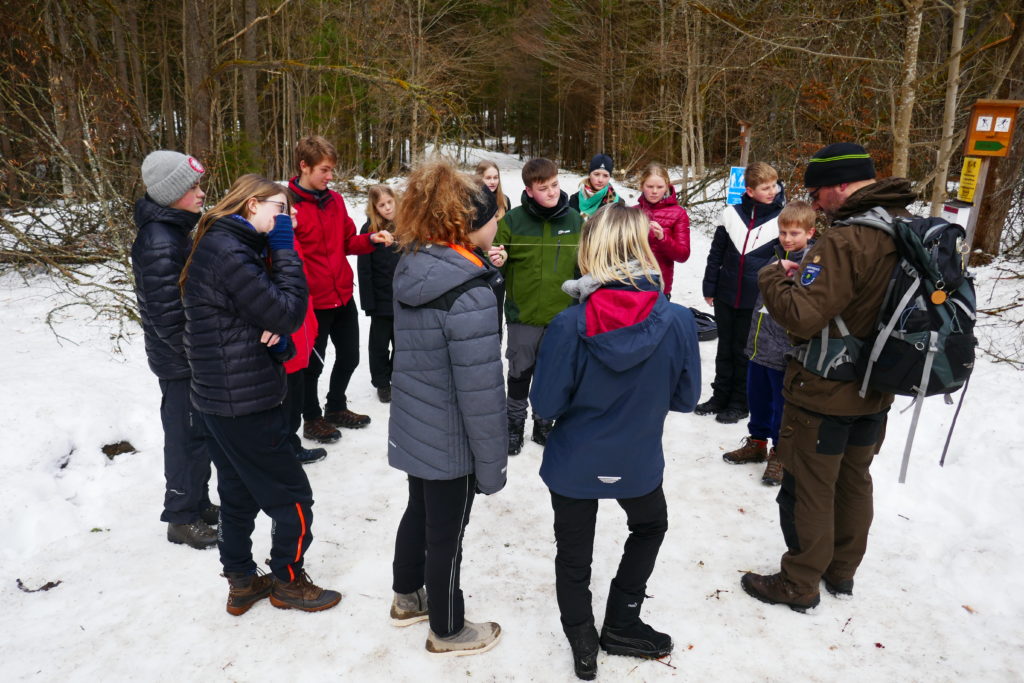
Wintercamp in Bavarian Forest
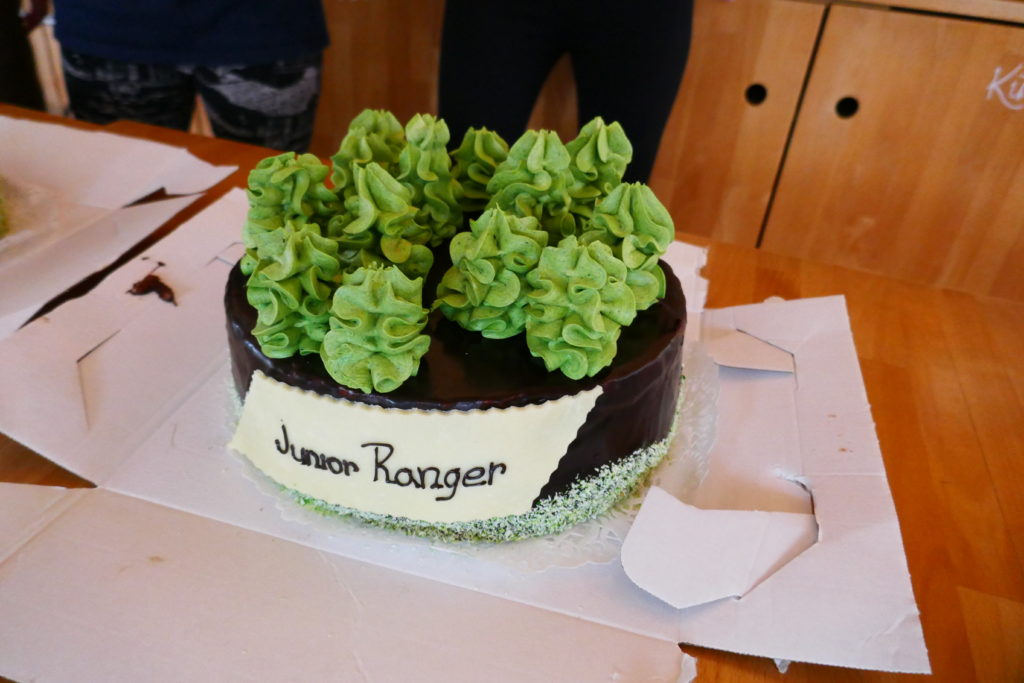
Wintercamp in Bavarian Forest
Join the Junior Ranger Programme
The EUROPARC Junior Ranger Programme was launched in 2002 as a pilot project embracing four partner parks. The network has grown ever since. Being part of an extended European Junior Ranger network enables young people to connect with their peers across Europe.
The EUROPARC Federation Junior Ranger Programme is aimed at young people aged 12-18 who are living within or close to the protected area. In 2016, the programme involves around 80 Protected Areas across 19 different EU countries, working with ~5000 youths every year.
Discover our Junior Ranger network in Europe with our infographic.
Requirements and recommendations to join the EUROPARC JR network:
- A 5 – days programme per year is the minimum required expected: it can be one week, or different days activities throughout the year.
-
Activities should provide real nature conservation work experiences, and possibly also include cultural and social topics. Most of them should be done outdoors, in nature.
-
Parks running Junior Ranger activities must be a EUROPARC member. We will provide all the information needed and help to get you started.
The map below is showing all Junior Ranger projects across Europe (in 2015-2019), with basic information, useful links, videos or pictures. We recommend to put the map on full screen ( left bottom button ) or to open it in a new tab.
What does it mean to be a Junior Ranger
Being a respected participant in Junior Ranger and other youth activities in a Protected Area enables young people of the community to feel they have a role to play and can see their actions having an impact on improvements to their areas, as well as building strong interpersonal skills that will contribute to better relations in education, business, and society.
Such Junior Ranger programmes are:
- Good for the development of the Ranger Service (or park staff);
- Facilitate social cohesion by improving relations between the park and the local community;
- And can make positive, confident and healthy young people
Being part of the network also enables to connect Junior Rangers in Protected Areas across Europe. Perhaps you want to find a Junior Ranger Programme to twin with from another part of Europe. We can help members with support and advice and connect across the network. Some of our sections encourage programme, for instance, the very successful programme in Germany.
To learn more about the work of Junior Rangers, you can watch the documentary “A European Tour of Junior Rangers: Working for Nature“. This film portrays some of the activities that some of the Junior and Youth Ranger teams carry out to protect endangered habitats and species in Europe.
To learn more about this program, please download the brochure, as well as the very useful guide of good practice published by EAI.
And visit the official EUROPARC Junior Ranger Facebook!
